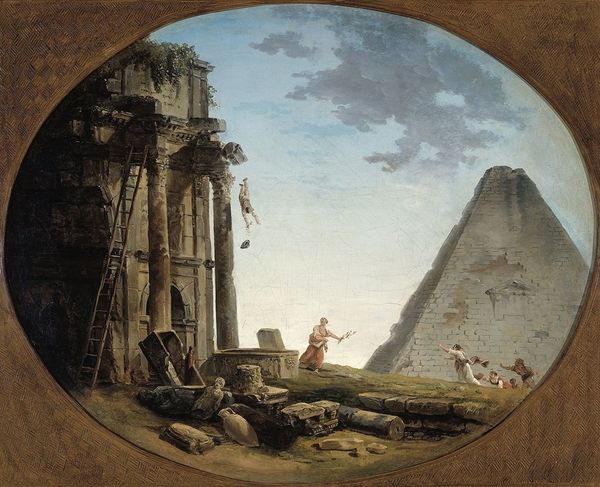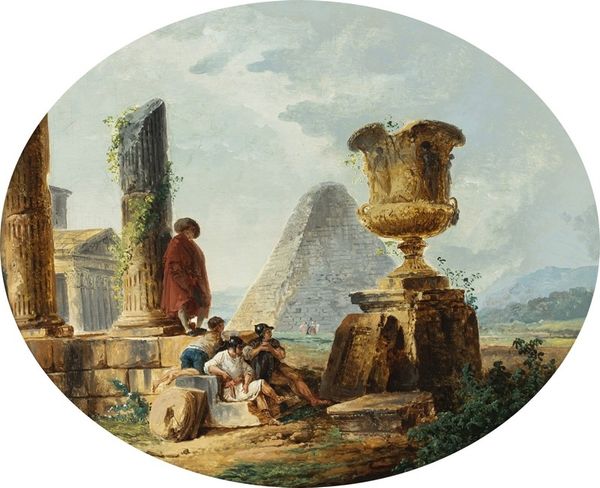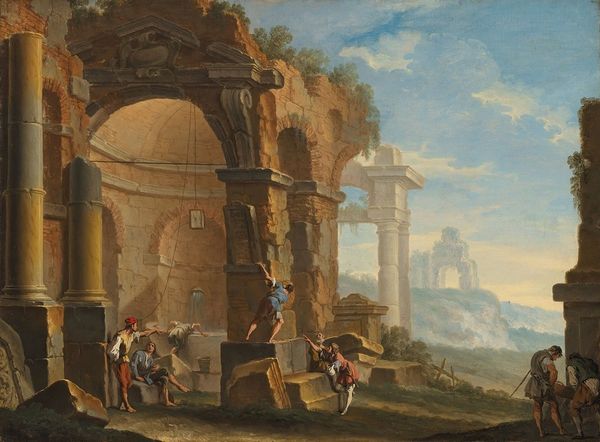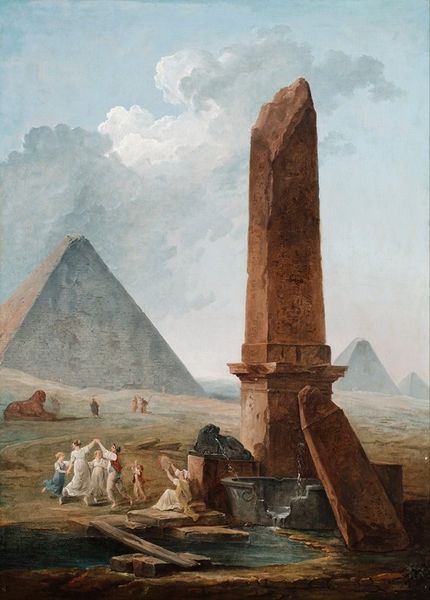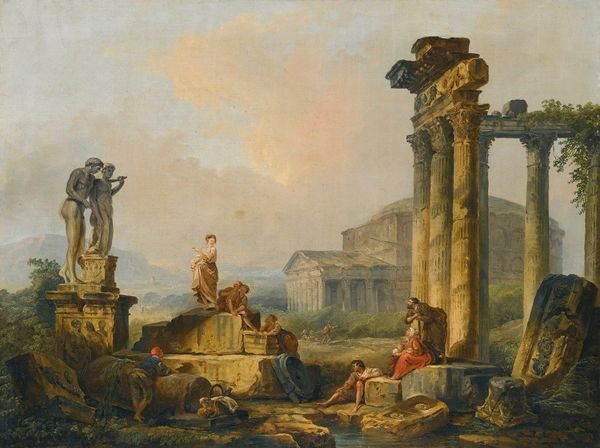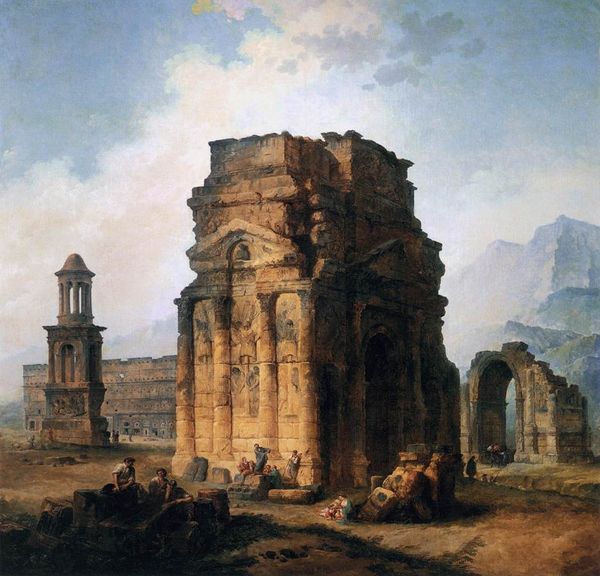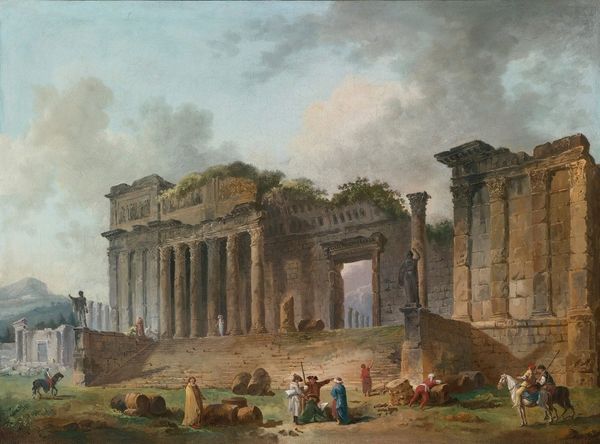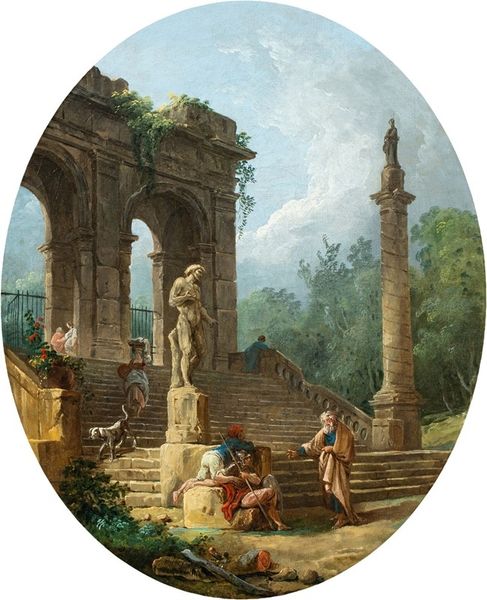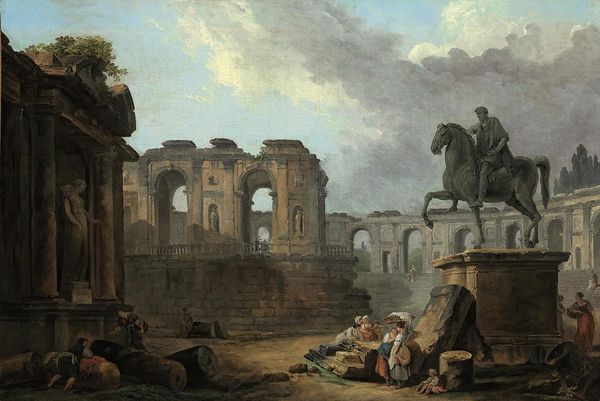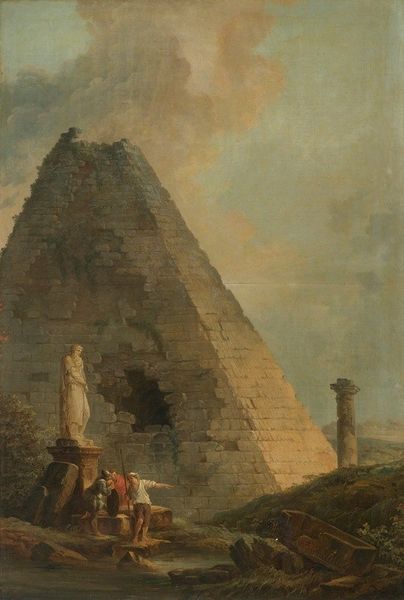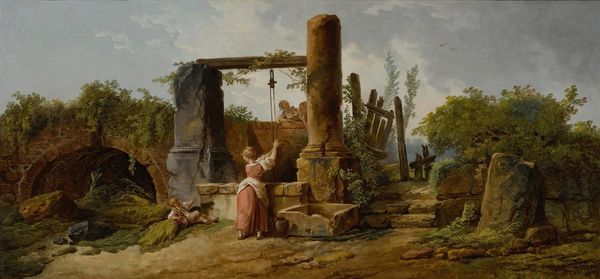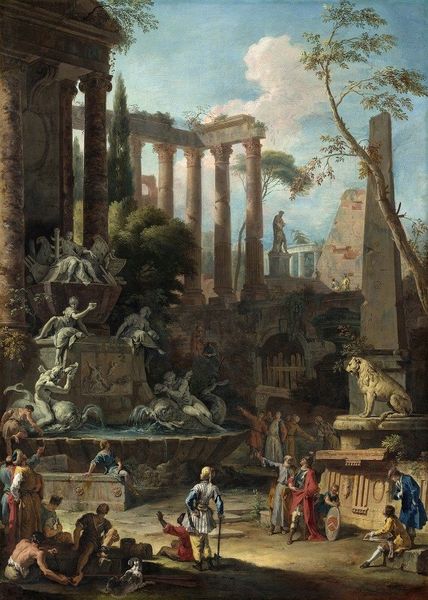
painting, oil-paint, architecture
#
neoclacissism
#
painting
#
oil-paint
#
landscape
#
classical-realism
#
romanesque
#
oil painting
#
cityscape
#
history-painting
#
architecture
Copyright: Public Domain: Artvee
Editor: So, this is Hubert Robert's "Ruines Romaines," painted in 1776, an oil painting showing a kind of fanciful, almost dreamlike Roman landscape. It feels like a stage set for some grand, tragic play. What do you see in it? Curator: I see echoes, memories clinging to stone. Notice how Robert juxtaposes the recognizable with the invented: the pyramid looming incongruously beside classical ruins. This layering speaks to a cultural fascination with the past, not as a literal record, but as a source of emotional resonance. Editor: Emotional resonance... like a longing? Curator: Perhaps a longing, yes, but also a recognition of the cyclical nature of civilization itself. The ruins are not just decaying structures, but potent symbols. The pyramid, for instance, a marker of enduring power from a civilization long past, placed amidst the crumbling Roman columns. What do these ruined columns signify to you? Editor: I guess, impermanence. That everything, even something as mighty as Rome, will eventually crumble. Curator: Precisely. And look at the figures Robert includes. They're dwarfed by the scale of the ruins, rendered almost incidental. Are they tourists, wanderers, or even survivors? Their presence invites us to contemplate our own fleeting place in the grand narrative of history. It all carries a potent message of memory and time. Editor: That’s so interesting, seeing it as a commentary on memory, not just a pretty picture of ruins. Curator: The painting transcends mere representation; it becomes a meditation on time, memory, and the enduring power of symbols across cultures. Editor: Thanks for helping me unpack that! I definitely have a new appreciation for how much cultural history is embedded in this work.
Comments
No comments
Be the first to comment and join the conversation on the ultimate creative platform.
